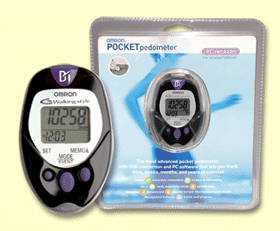SXSW 2008 will most likely be remembered for the Zuckerberg interview controversy. But a more interesting phenomenon, that in some ways broke through at SXSW, was health care and tech. Specifically the movement to user (or at least employer) owned Web-based health and wellness apps and services.

One of the most popular sessions was ‘Transforming Hospital Systems: The Digital Future of Healthcare’.
This is a guest post by Joshua Rosenthal, Ph.D., founder of www.Sprigley.com
The speakers were Michael Kennedy, an Info systems guy at Microsoft specializing in hospital and insurance systems, and Gregg Lucksinger, Chief Medical Officer of Red River Family Practice and Central Texas Clinical Research. Dr. Lucksinger opened with a case study of how Electronic Medical Records have helped his practice. Helped save time, save money, reduce mistakes, etc. It’s not too hard of a case to make in theory. Your bank uses electronic records to streamline your banking, why should your doctors have to mail each other libraries of paper files? Of course the devil is in the details, particularly those involving implementation.
SXSW health care session

Michael Kennedy noted that Microsoft is getting into health care big time. According to Kennedy, Microsoft’s health care staff now tops 600 full time employees. Much of the work focuses on tying electronic medical records to hospital systems. Not surprisingly, most of the growth is in foreign markets where things don’t need to be “retro-fitted” to engage “legacy systems”, but can be dropped in from scratch.
Microsoft’s Healthvault
All of this is old hat in healthcare circles and received limited yawns and polite nods of ascent in the session. Things got interesting when Kennedy described Microsoft’s Personal Health Record product, Healthvault.
Basic primer: Electronic Medical Records (EMRs) are for doctors and hospitals, insurance companies and employers. They contain things like codes for drugs, tests and procedures – i.e. data. Personal Health Records, on the other hand, are accessible to individual patients. They are a higher level description that people can understand themselves and share with others – i.e. information rather than data. Microsoft’s Healthvault places them squarely in the consumer market. It’s the plumbing that ties together devices and services meant for individuals. Add to that Google Health, another recent Big Internet Co entry into the same space, and it’s easy to see why the session was standing room only and the line for Q&A stretched almost out the door.
Kennedy noted that things were still early, still in roll out mode for both Microsoft and Google, but he mentioned enough current consumer devices and applications to create buzz.
Health 2.0 Devices and Apps
First up, watches from Polar that monitor your heart rate and write the information to your Personal Health Record:

Imagine sharing trends from your workout sessions with your doctor health coach or personal trainer. Same thing with a scale from A&D Medical:

A pedometer from OMRON:

The more traditional medical devices, like blood pressure monitors from OMRON:

A wrist-worn blood pressure unit from Microlife, and a blood glucose meter from Johnson & Johnson’s LifeScan:

Okay, so the above are some cool devices. Is anyone making slick apps to sit on top of those devices? Check out the American Heart Association’s Blood Pressure Management Center, which gives a slick visualization and makes it easy to see your blood pressure trends over time:

Maybe you’re an athlete. How about software from Peaksware? Training Peaks is for the workout junky, while Fitness Peaks is more for the person interested in being generally fit.
Trends
So what does all of this mean? Firstly, these devices and apps help people become experts in their health and well-being. Individuals gather their data – blood pressure, glucose, heart rate, weight, workout session and nutritional information, etc – then use the apps to learn about themselves over time.
Second, portability. Tracking your weight, blood pressure and workout info over time isn’t new. The problem was that every product lived in its own silo. The offerings from Microsoft and Google break down these walled gardens, creating rich data assets for personal lifelong care, from their interaction with a given product.
Perhaps more importantly, granting people a 360 degree view of themselves – how does taking a walk affect your own blood pressure and glucose?
Finally, personal responsibility. Health care is about behavior change – about people taking control of their own health and well-being. Right now everybody has your data but you. Your doctor, your employer and your insurance company have the information and the tools. But that data is lost every time you move, switch doctors, switch jobs or insurance companies. Ironically, the person who has the greatest chance of impacting your health behaviors (you), has virtually no access to information and tools to do so. But the above apps are changing that, creating access and portability that give you the power to take control of your own health and well-being.
Written by Joshua Rosenthal, Ph.D., founder of www.Sprigley.com

















